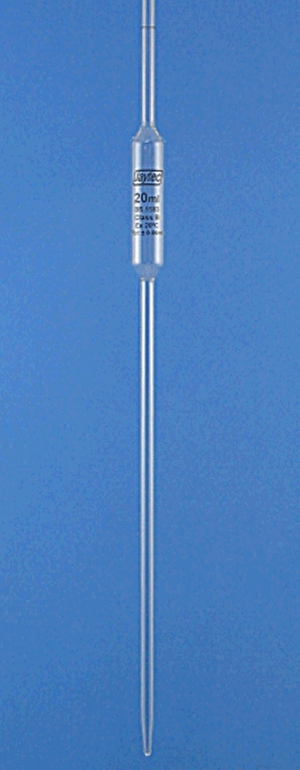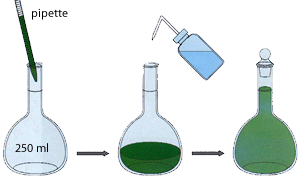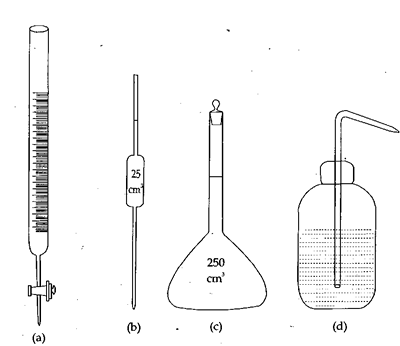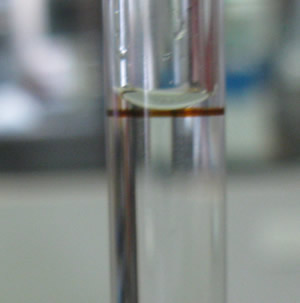Dilution of vinegar sample
Sometimes, the samples we are analysing are too concentrated and can not be used for titration. We have to dilute our samples.
For our dilution we use a pipette, a filling bulb and a volumetric flask.
Familiarise yourself with how to use a pipette.
Use a 25 mL pipette to deliver a 25.0 mL volume of vinegar to a 250 mL volumetric flask.
Fill the volumetric flask to the line with distilled water. The bottom of the meniscus must be in line with the mark. If you over fill the volumetric flask you will have to start again. To fill the flask your eyes must be in line with the mark otherwise a parallex error will occur.
You now have diluted the vinegar 1 part in 10. It is now one tenth of the original concentration.

The diagram on the right shows the procedure for the dilution of vinegar.
What is the purpose of the volumetric flask?
What must you do if, after adding water to the volumetric flask, the meniscus is above the mark?
Jonathon pipettes 25.0 mL of vinegar into the volumetric flask using a 25.0 mL pipette. After expelling the liquid from the pipette Jonathon touches the tip of the pipette on the side of the volumetric flask. He then notices a small volume of liquid remaining in the pipette. What should Jonathon do?

Identify the following peices of equipment.
- Pipette
- Burette
- Volumetric flask
Which piece of equipment is used to deliver an accurate, variable amount of solution?
Which piece of equipment delivers an accurate fixed volume of solution?

